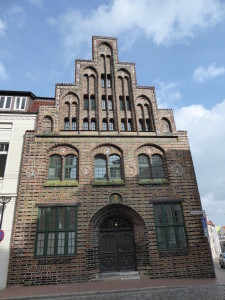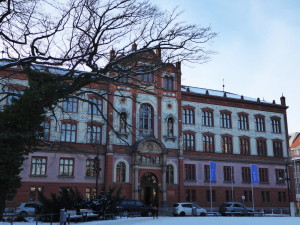First things first, I’m not talking about the music genre. I’m talking about common houses, the ones most people live in, I suppose. This is for the people who like touring around cities, marveling at unique architecture or just generally like houses and roofs and stuff. Whatever floats your (house) boat. Why should I be talking about houses though? What’s so special about them to write a whole blog about them?
Historically speaking, as a city with access to an open sea route and thus an affinity for naval trade systems, Rostock

used to be one of the richest cities in Germany during the late Middle Ages. You don’t even have to be a fan of architecture to appreciate the beauty of it. So, what did rich, medieval cities with money and means usually do? They built big and impressive houses for everyone to see that they are, in fact, extravagantly and exuberantly rich. Luckily for us, this has left quite a

significant mark on Rostock’s townly face. For obvious reasons, most architectural gems lurk in the historic districts of the city, but given the fact that Rostock is quite small, the whole city is filled with pastel-coloured, toned-down facades, narrow brick stone buildings and massive storehouses that stand (tall) for golden times long passed. The busiest and most central street, the Kröpeliner Straße leads you up to its namesake town’s gate, is basically a conglomerate of wonderful, Hanseatic architecture. And situated right in the middle of it is the main building of our

university which directly connects to a hidden, old nunnery in its backyard. A little further down to the Neuer Markt (New Market), right at the other end of the street, you’ll find the entrance to the old town, filled with the city’s oldest and most beautiful houses that let you dive into another period of time. It is easy to imagine the people who lived here many centuries ago when you walk down the steep cobblestone streets leading to the harbour. Every house, every stone, and every street has its own story to tell, and if you look closely, you will be able to imagine it even more clearly than before. There were people before us who walked the places we are so confidently walking today; their stories lie within the ways they interacted with their surroundings and created things that would last for us to see. The cobbled streets will make you travel back in time, and eventually make you stumble upon hidden passages and tiny, crooked houses. So go on and be on your way and explore the city, for it has much more to tell than what meets the eye
